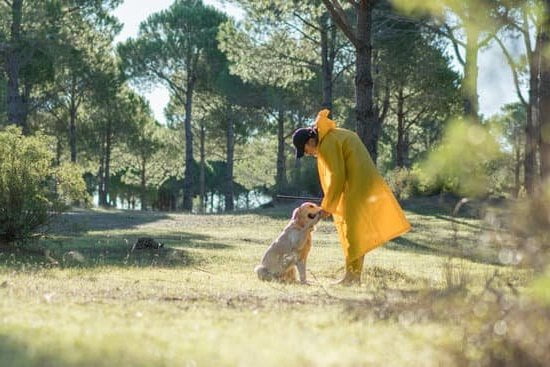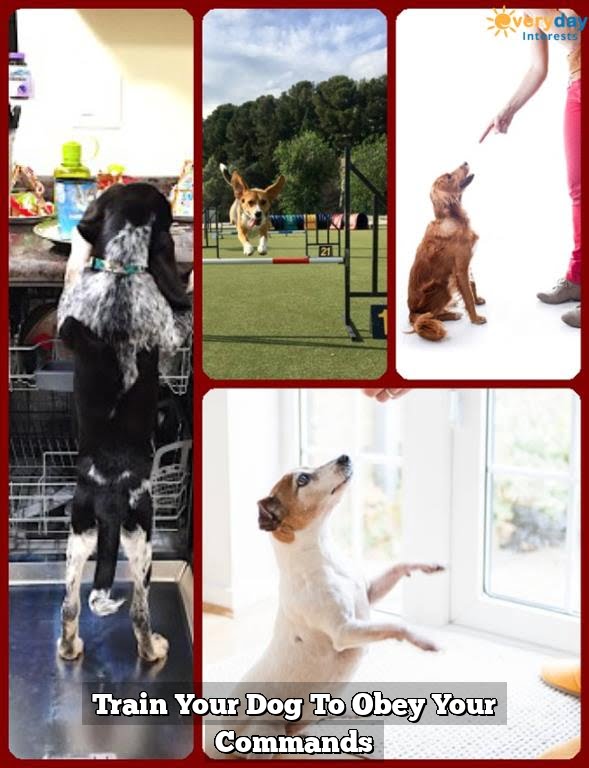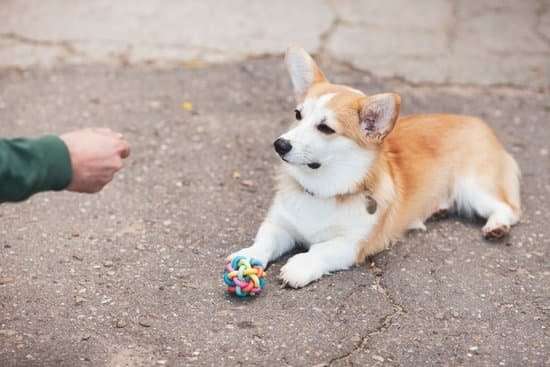Livestock guardian dogs (LGDs) play a crucial role in protecting herds and flocks from predators, making them invaluable assets to farmers and ranchers. Understanding how to train your livestock guardian dog is essential to ensure they can effectively carry out their duties. From choosing the right breed to handling common behavioral issues, a well-trained LGD can provide peace of mind and security for both animals and humans.
When it comes to training a livestock guardian dog, it’s important to consider the characteristics and traits of the breed you’ve selected. Different breeds have unique qualities that make them better suited for specific environments or tasks. Building a strong bond with your LGD is also key – establishing trust and leadership will help create a foundation for effective training and communication.
In this comprehensive guide, we will explore the fundamentals of training a livestock guardian dog, starting with basic commands like sit, stay, come, and leave it. We will also delve into more advanced techniques such as recall, boundary training, and protection commands.
Additionally, we will address common behavioral issues that may arise with LGDs and provide tips on maintaining their health and wellness through proper nutrition, exercise, and veterinary care. Let’s dive into the world of training your reliable and loyal livestock guardian dog.
Choosing the Right Breed
When it comes to choosing the right breed for your livestock guardian dog (LGD), there are several key characteristics and traits to consider. One of the most important factors is the size of the breed, as LGDs need to be large enough to effectively protect livestock from predators.
Additionally, you’ll want to look for breeds that are known for their intelligence, trainability, loyalty, and protective instincts. Some common LGD breeds include the Great Pyrenees, Anatolian Shepherd, Maremma Sheepdog, and Akbash.
Another important trait to consider when choosing an LGD breed is its energy level and activity needs. Some LGD breeds are more high-energy and require plenty of exercise and mental stimulation to thrive, while others are more laid-back. It’s essential to match the energy level of the breed with your own lifestyle and the demands of your farm or ranch.
In addition to physical characteristics and energy levels, it’s crucial to research the specific temperament traits of different LGD breeds. Some breeds may be naturally more aggressive towards potential threats, while others may be more gentle but still effective guardians. Understanding these differences can help you choose a breed that aligns with your training goals and personality preferences. Ultimately, selecting the right breed sets the foundation for successful training in “how to train your livestock guardian dog”.
| Characteristic | Trait |
|---|---|
| Size | Large enough for protection |
| Intelligence | Key for trainability |
| Temperament | Determines approach to threats |
Building a Strong Bond
Establishing a strong bond with your livestock guardian dog is essential for effective training and successful integration into your farm or ranch. By building trust and demonstrating leadership, you can ensure that your LGD understands its role and responsibilities in protecting your animals. Here are some key tips on how to cultivate a solid relationship with your four-legged protector:
- Spend quality time together: Engage in daily activities such as feeding, grooming, and playtime to build rapport with your LGD.
- Consistent training routines: Establish clear rules and boundaries from the start to help your dog understand expectations and reinforce positive behavior.
- Positive reinforcement: Reward good behavior with praise, treats, or toys to motivate your LGD and strengthen the bond between you.
Learning how to train your livestock guardian dog starts with creating a strong foundation of trust and respect. By investing time and effort into building a solid connection with your LGD, you can set the stage for successful training outcomes.
Establishing Trust Through Leadership
As the leader of the pack, it is important to exhibit confidence and consistency in your interactions with your livestock guardian dog. By demonstrating assertiveness without resorting to harsh punishments, you can earn your dog’s respect and establish yourself as a reliable authority figure:
- Show assertive body language: Use confident posture, eye contact, and calm demeanor to communicate leadership to your LGD.
- Set clear boundaries: Establish rules for behavior both on and off duty to help your dog understand its role as a guardian.
- Practice patience: Building trust takes time, so be patient with your LGD as you work together towards common goals.
By taking on the role of a trustworthy leader in your relationship with your livestock guardian dog, you can lay the groundwork for successful training sessions and a harmonious partnership on the farm or ranch.
Basic Commands Training
Training your livestock guardian dog to follow basic commands is an essential part of their development and the effectiveness of their role on your farm or ranch. The commands of sit, stay, come, and leave it are crucial for maintaining control and ensuring the safety of both your animals and property. Here’s how to train your livestock guardian dog to master these basic commands:
Firstly, start training your LGD in a quiet and familiar environment where distractions are minimal. Use positive reinforcement techniques such as treats, praise, and affection to reward your dog for obeying commands. For the “sit” command, hold a treat close to their nose and slowly move it upwards while saying the word “sit.” As they raise their head to follow the treat, their bottom will naturally lower into a sitting position.
Next, work on the “stay” command by having your dog sit and then placing an open palm in front of them while saying “stay.” Start with a short distance and gradually increase the time and distance as they become more comfortable with the command. For the “come” command, call your dog’s name followed by the word “come” in an inviting tone. When they respond positively by approaching you, reward them with praise and treats.
Lastly, practice the “leave it” command by placing a treat on the ground or in their reach and saying “leave it.” When they refrain from touching or grabbing the treat, immediately reward them with a different treat or toy. Consistency is key when training your livestock guardian dog, so ensure regular practice sessions to reinforce these basic commands in different situations.
| Command | Training Technique |
|---|---|
| Sit | Use treats to lure them into a sitting position |
| Stay | Start with short distances and increase gradually |
| Come | Call their name followed by “come” in an inviting tone |
| Leave It | Place a treat nearby and use positive reinforcement when they resist touching it |
Desensitization Training
Gradual Exposure
One effective approach to desensitization training is through gradual exposure. Start by introducing your LGD to low-intensity stimuli or environments and gradually increase the level of exposure as they become more comfortable.
For example, if your LGD seems nervous around loud noises, you can start by playing recordings of those noises at a low volume and gradually increase the volume over time. It is essential to observe your dog’s body language for signs of stress or discomfort and adjust the training accordingly.
Socialization
Socialization plays a significant role in desensitizing your livestock guardian dog. Exposing them to different animals, people, and environments from a young age can help build their confidence and reduce fearfulness towards unfamiliar situations. Arrange controlled interactions with other animals or people in a positive setting to help your LGD develop social skills and adaptability. Positive reinforcement during these interactions will also reinforce good behavior and build trust between you and your dog.
Consistency and Patience
Consistency is key when it comes to desensitization training for your livestock guardian dog. Make sure to schedule regular training sessions where you expose your LGD to different environments or stimuli in a controlled manner. Patience is also essential as every dog progresses at its own pace.
Remember to praise and reward good behavior during desensitization training to encourage positive associations with new experiences. With time, patience, and consistent training efforts, you can help your LGD become well-adjusted and confident in various situations on the farm or ranch.
Advanced Training Techniques
When it comes to training your livestock guardian dog (LGD), it is essential to go beyond basic commands and incorporate advanced techniques to ensure their effectiveness in protecting your livestock. Advanced training techniques such as recall, boundary training, and protection commands are crucial for enhancing the skills and capabilities of your LGD.
Recall training is vital for any working dog, including LGDs, as it allows you to call them back to you in potentially dangerous situations or when they are needed elsewhere on the farm. Teaching your LGD a reliable recall command will help you maintain control over their movements and keep them safe. Using positive reinforcement methods and high-value treats can motivate your dog to respond promptly to the recall command.
Boundary training is another important aspect of advanced training for LGDs. By setting clear boundaries for where your dog should patrol or stay within the property, you can prevent them from wandering off or getting lost. Establishing these boundaries early on through consistent reinforcement will help your LGD understand their role and responsibilities on the farm.
In addition to recall and boundary training, teaching protection commands is essential for ensuring that your LGD can effectively deter predators and threats to your livestock. Training commands such as ‘watch,’ ‘guard,’ or ‘alert’ can signal to your dog when there is potential danger, allowing them to act swiftly and decisively in protecting the animals under their care. Consistent practice and reinforcement of these protection commands will help sharpen your LGD’s instincts and response abilities in critical situations.
Handling Common Behavioral Issues
Understanding Common Behavioral Issues
Training a livestock guardian dog can come with its set of challenges, including dealing with common behavioral issues such as aggression, fearfulness, and excessive barking. It is important to understand that these behaviors are often rooted in the natural instincts and protective nature of these working dogs. By addressing these issues early on and using positive reinforcement techniques, you can help your LGD become a well-rounded and reliable guardian for your livestock.
Addressing Aggression
Aggression in livestock guardian dogs can stem from their innate instinct to protect their territory and flock. However, it is essential to differentiate between appropriate guarding behavior and aggressive behavior towards humans or other animals. Proper socialization from a young age, consistent training, and clear leadership can help address aggression issues in LGDs. Working with a professional trainer experienced in handling LGDs can also be beneficial in managing and redirecting aggressive tendencies.
Dealing With Fearfulness and Excessive Barking
Fearfulness and excessive barking are other common behavioral issues that livestock guardian dogs may exhibit. Fearfulness can be triggered by unfamiliar situations or environments, leading to anxious behavior in LGDs. To help your dog overcome fearfulness, gradual exposure to new stimuli in a controlled manner can desensitize them and build confidence over time.
Excessive barking, often used as a means of communication or warning, can be managed through proper training techniques focusing on redirection and positive reinforcement. Consistent training sessions focused on teaching alternative behaviors when faced with triggers can help mitigate excessive barking tendencies in your LGD.
By understanding the root causes of aggression, fearfulness, and excessive barking in livestock guardian dogs and implementing appropriate training strategies tailored to their needs, you can address these common behavioral issues effectively. Patience, consistency, and positive reinforcement play key roles in shaping your LGD into a well-behaved guardian that not only protects your livestock but also integrates seamlessly into your farm or ranch environment.
Remember that every dog is unique, so it may take time and effort to see progress, but with dedication and proper training techniques tailored to your dog’s individual personality, you can help your livestock guardian dog become a valued member of your farming operation.
Health and Wellness
Livestock guardian dogs play a vital role in protecting your farm animals from predators, making it crucial to prioritize their health and wellness. Proper nutrition is key to ensuring your LGD has the energy and strength to perform their duties effectively.
When selecting a diet for your livestock guardian dog, consider their age, size, activity level, and any specific dietary requirements they may have. A high-quality dog food formulated for working breeds is typically a good choice, but consulting with your veterinarian can help you tailor their diet to meet their individual needs.
In addition to a balanced diet, regular exercise is essential for the well-being of your livestock guardian dog. These dogs are naturally active and require ample opportunities to release their energy. Providing them with daily walks, playtime, or even tasks around the farm can help keep them physically and mentally stimulated. Engaging in activities that mimic their natural instincts, such as patrolling or guarding the herd, can be particularly beneficial for keeping them healthy and happy.
Just like any other pet, regular veterinary care is necessary to ensure the long-term health of your livestock guardian dog. Schedule routine check-ups with a veterinarian who is familiar with working breeds to monitor your LGD’s overall health and address any concerns promptly.
Stay up-to-date on vaccinations, heartworm prevention, parasite control, and dental care to keep your furry friend in top condition. By prioritizing proper nutrition, exercise, and veterinary care for your livestock guardian dog, you can help them lead a long and fulfilling life while continuing to excel in their role on the farm or ranch.
- Provide a balanced diet tailored to their needs
- Engage in daily exercise routines
- Schedule regular veterinary check-ups
Real-Life Scenarios
When it comes to training your livestock guardian dog, putting the skills learned in a real-life setting on the farm or ranch is crucial. This hands-on experience helps solidify the training and ensures that your LGD can effectively protect your livestock. One of the key aspects of real-life scenarios is understanding how your dog responds to various situations and stimuli outside of a controlled environment.
To train your livestock guardian dog effectively in real-life scenarios, start by introducing them to the animals they will be protecting. Allow supervised interactions to build familiarity and trust between the LGD and the livestock. It’s essential for your dog to understand their role as a guardian and establish a strong bond with the animals they are protecting.
Additionally, practicing recall commands, boundary training, and protection commands in real-life situations will help reinforce these behaviors. For example, simulating a predator threat or a trespasser on your property can test how well your LGD responds to commands and protects the herd.
Regular training sessions in practical settings will keep your livestock guardian dog sharp and prepared for any potential threats they may encounter on the farm or ranch. By consistently exposing them to different scenarios, you can ensure that your LGD is well-equipped to fulfill their protective duties effectively.
Conclusion
In conclusion, training your livestock guardian dog is a rewarding and essential process for their success in protecting your livestock. By understanding the role of an LGD, choosing the right breed, building a strong bond, and implementing basic and advanced training techniques, you can ensure that your furry companion is well-prepared for their duties on the farm or ranch. Consistency, patience, and positive reinforcement are key factors in how to train your livestock guardian dog effectively.
Remember that desensitization training and handling common behavioral issues are also crucial aspects of shaping a well-rounded livestock guardian dog. Exposing your LGD to different environments and stimuli will help them adapt easily to changing situations, while addressing aggression, fearfulness, or excessive barking will reinforce good behavior. Health and wellness should not be overlooked either, as proper nutrition, exercise, and regular veterinary care are essential for maintaining the overall well-being of your four-legged protector.
As you celebrate the successful training of your reliable livestock guardian dog, take pride in the hard work and dedication you’ve put into their development. Your efforts will not only result in a well-trained companion but also a loyal guardian that you can depend on to keep your livestock safe. With the right training and care, your livestock guardian dog will undoubtedly become an invaluable asset to your farming or ranching operation.
Frequently Asked Questions
Do Livestock Guardian Dogs Need Training?
Livestock guardian dogs do need training to effectively fulfill their role of protecting livestock. Training helps them understand boundaries, build trust with the animals they protect, and respond appropriately to different situations. Consistent and positive reinforcement methods are usually recommended for training these dogs.
How Do You Discipline a Livestock Guardian Dog?
Disciplining a livestock guardian dog requires a different approach compared to disciplining other types of breeds. These dogs are independent thinkers and respond best to clear rules, boundaries, and consistent leadership from their owners or handlers. Harsh physical punishment should be avoided, as it can damage the relationship between the dog and its owner.
How Do I Train My Dog to Protect Livestock?
Training a dog to protect livestock involves teaching them specific behaviors that are necessary for their role as guardians. This includes socializing them with the animals they will be protecting, teaching them basic obedience commands, reinforcing their instinctual behaviors through positive reinforcement techniques, and gradually introducing them to their duties in a controlled manner.
Consistency, patience, and building trust are key elements in successfully training a livestock guardian dog.

Welcome to the blog! I am a professional dog trainer and have been working with dogs for many years. In this blog, I will be discussing various topics related to dog training, including tips, tricks, and advice. I hope you find this information helpful and informative. Thanks for reading!





